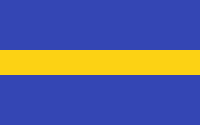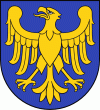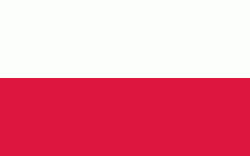Silesian Voivodeship (Silesian Voivodeship)
 |
 |
Despite the Silesian Voivodeship's name, most of the historic Silesia region lies outside the present Silesian Voivodeship – divided among Lubusz, Lower Silesian, and Opole Voivodeships. The eastern half of Silesian Voivodeship (and, notably, Częstochowa in the north) was historically part of Lesser Poland.
The Voivodeship was created on 1 January 1999 out of the former Katowice, Częstochowa and Bielsko-Biała Voivodeships, pursuant to the Polish local government reforms adopted in 1998.
It is the most densely populated voivodeship in Poland. Within the area of 12,300 square kilometres, there are almost 5 million inhabitants. It is also the largest urbanised area in Central and Eastern Europe. In relation to economy, over 13% of Poland's gross domestic product (GDP) is generated here, making the Silesian Voivodeship one of the wealthiest provinces in the country.
The first Silesian Voivodeship was created in the Second Polish Republic. It had a much wider range of autonomy than other contemporary Polish voivodeships, and it covered all the historical lands of Upper Silesia which ended up in Interwar period Poland. Among these were Katowice (Kattowitz), Rybnik (Rybnik), Pszczyna (Pleß), Wodzisław (Loslau), Żory (Sohrau), Mikołów (Nikolai), Tychy (Tichau), Królewska Huta (Königshütte), Tarnowskie Góry (Tarnowitz), Miasteczko Śląskie (Georgenberg), Woźniki (Woischnik), Lubliniec (Lublinitz), Cieszyn (Teschen), Skoczów (Skotschau), and Bielsko (Bielitz). This Voivodeship did not include – as opposed to the present one – lands and cities of old pre-Partition Polish–Lithuanian Commonwealth. Among the last ones the Southern part was included in Kraków Voivodeship Żywiec (Saybusch), Wilamowice (Wilmesau), Biała Krakowska (Biala) and Jaworzno), and the North Western part Będzin (Bendzin), Dąbrowa Górnicza (Dombrowa), Sosnowiec (Sosnowitz), Częstochowa (Tschenstochau), Myszków, Szczekociny (Schtschekotzin), Zawiercie, Sławków) belonged to Kielce Voivodeship.
After the invasion of Poland by Nazi Germany on 8 October 1939, Hitler published a decree called, "About division and administration of Eastern Territories". A Silesian Province (Gau Schlesien) was created, with a seat in Breslau (Wrocław). It consisted of four districts: Kattowitz, Oppeln, Breslau and Liegnitz.
The following counties were included in Kattowitz District: Kattowitz, Königshütte, Tarnowitz, Beuthen Hindenburg, Gleiwitz, Freistadt, Teschen, Biala, Bielitz, Saybusch, Pleß, Sosnowitz, Bendzin and parts of the following counties: Kranau, Olkusch, Riebnich and Wadowitz. However, according to Hitler's decree from 12 October 1939 about establishing General Government (Generalgouvernement), Tschenstochau (Częstochowa) belonged to GG.
In 1941 the Silesian Province (Provinz Schlesien) underwent new administrative division and as a result Upper Silesian Province was created (Provinz Oberschlesien):
* Kattowitz District (Regierungsbezirk Kattowitz) – entire Silesian Voivodeship without Lubinitz county, Bendzin County, part of Olkusch county, Biala county, Saybusch and parts of Kranau and Wadowitz counties.
* Oppeln District (Regierungsbezirk Oppeln) – Lubinitz county and parts of Tschenstochau and Warthenau counties.
Map - Silesian Voivodeship (Silesian Voivodeship)
Map
Country - Poland
 |
 |
| Flag of Poland | |
Poland has a temperate transitional climate and its territory traverses the Central European Plain, extending from Baltic Sea in the north to Sudeten and Carpathian Mountains in the south. The longest Polish river is the Vistula, and Poland's highest point is Mount Rysy, situated in the Tatra mountain range of the Carpathians. The country is bordered by Lithuania and Russia to the northeast, Belarus and Ukraine to the east, Slovakia and the Czech Republic to the south, and Germany to the west. It also shares maritime boundaries with Denmark and Sweden.
Currency / Language
| ISO | Currency | Symbol | Significant figures |
|---|---|---|---|
| PLN | Polish złoty | zÅ‚ | 2 |
| ISO | Language |
|---|---|
| PL | Polish language |










































